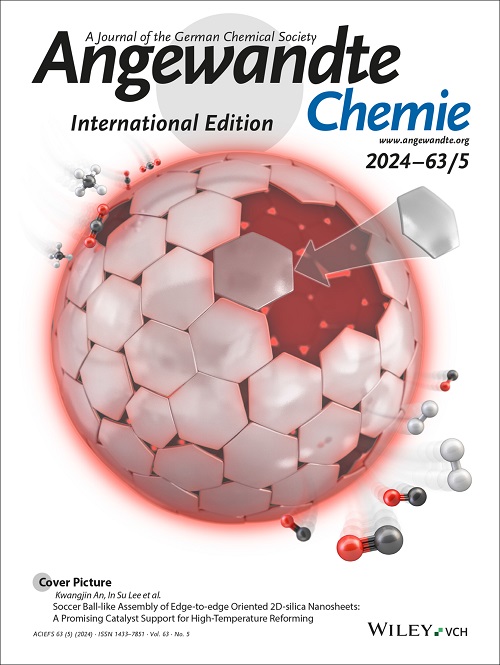Engineering Stable Decomposition Products on Cathode Surfaces to Enable High Voltage All-Solid-State Batteries
IF 16.1
1区 化学
Q1 CHEMISTRY, MULTIDISCIPLINARY
引用次数: 0
Abstract
Sulfide solid electrolytes such as Li6PS5Cl hold high promise for solid state batteries due to their high ionic conductivity; however, their oxidation potential of ~2.5 V is not compatible with high voltage Ni-rich cathodes such as LiNixCoyMn1−x−yO2 (x≥0.8). Here, we devise an effective, conformal and thin coating on the cathode active material guided by density functional theory, which suppresses the oxidative decomposition of Li6PS5Cl as shown by experiment. The nanometric coating on nickel-rich NMC85 enabled capacity retention of 82% after 200 cycles (2.8-4.3 V vs Li+/Li) using Li6PS5Cl as the solid electrolyte. In comparison, cells with an uncoated CAM only displayed 56% capacity retention. The coated-NCM85 cells also demonstrate much better rate performance and higher capacity. The enhanced performance is due to the formation of a stable amorphous cathode-electrolyte interphase accruing from the decomposition products of the LiPO2F2 precursor (as predicted by DFT), which protect the sulfide electrolyte from oxidation. The coating fabricated in this cost-effective process showed superior performance to state-of-the-art coatings such as LiNbO3. This work highlights the importance of rationally designing stable coating materials based on their potential decomposition products and confirms the suitability of a low-cost and conformal coating to enable sulfide electrolyte-based all-solid-state batteries.在阴极表面设计稳定的分解产物,实现高压全固态电池
硫化物固体电解质(如 Li6PS5Cl)具有高离子传导性,因此在固态电池中大有可为;然而,其约 2.5 V 的氧化电位与高压富镍阴极(如 LiNixCoyMn1-x-yO2(x≥0.8))不兼容。在此,我们以密度泛函理论为指导,在阴极活性材料上设计了一种有效的、保形的薄涂层,实验表明它能抑制 Li6PS5Cl 的氧化分解。以 Li6PS5Cl 为固态电解质,在富含镍的 NMC85 上镀上纳米涂层后,经过 200 次循环(2.8-4.3 V vs Li+/Li),电池容量保持率达到 82%。相比之下,未涂覆 CAM 的电池容量保持率仅为 56%。有涂层的 NCM85 电池还具有更好的速率性能和更高的容量。性能提高的原因是,LiPO2F2 前驱体的分解产物形成了稳定的无定形阴极-电解质夹层(如 DFT 预测的那样),保护硫化物电解质不被氧化。与铌酸锂等最先进的涂层相比,用这种经济高效的工艺制作的涂层表现出更优越的性能。这项工作强调了根据潜在分解产物合理设计稳定涂层材料的重要性,并证实了低成本保形涂层适用于基于硫化物电解质的全固态电池。
本文章由计算机程序翻译,如有差异,请以英文原文为准。
求助全文
约1分钟内获得全文
求助全文
来源期刊
CiteScore
26.60
自引率
6.60%
发文量
3549
审稿时长
1.5 months
期刊介绍:
Angewandte Chemie, a journal of the German Chemical Society (GDCh), maintains a leading position among scholarly journals in general chemistry with an impressive Impact Factor of 16.6 (2022 Journal Citation Reports, Clarivate, 2023). Published weekly in a reader-friendly format, it features new articles almost every day. Established in 1887, Angewandte Chemie is a prominent chemistry journal, offering a dynamic blend of Review-type articles, Highlights, Communications, and Research Articles on a weekly basis, making it unique in the field.

 求助内容:
求助内容: 应助结果提醒方式:
应助结果提醒方式:


